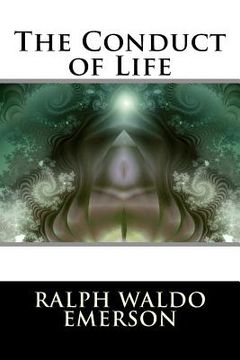Synopsis "The Conduct of Life (in English)"
The Conduct of Life is a collection of essays by Ralph Waldo Emerson published in 1860 and revised in 1876. In this volume, Emerson sets out to answer "the question of the times: " "How shall I live?" It is composed of nine essays, each preceded by a poem. These nine essays are largely based on lectures Emerson held throughout the country, including for a young, mercantile audience in the lyceums of the Midwestern boomtowns of the 1850s. The Conduct of Life has been named as both one of Emerson's best works and one of his worst. It was one of Emerson's most successful publications and has been identified as a source of influence for a number of writers, including Friedrich Nietzsche. Three years after publishing his English Traits, Boston's Ticknor & Fields announced on 27 December 1859, an "early appearance" of a new book by Emerson titled The Conduct of Life. Confirmed as "completed" on 10 November 1860, Emerson's seventh mayor work came out on 12 December of the same year-simultaneously in the US and in Great Britain (published there by Smith, Elder & Co.). It was advertized as "matured philosophy of the transatlantic sage" and sold as a collector's item "uniform in size and style with Mr. Emerson's previous works." Quickly running through several editions in the U.S. (Ticknor & Fields announced a third edition only a week later) it was soon picked up by a third publisher (Cleveland's Ingham & Bragg). In Great Britain, it was reported as "selling rapidly." Subsequently, several passages from the book appeared in popular U.S. newspapers, most of them quoting either from 'Wealth' or 'Behavior' (especially the 'Monk Basle'-passage and Emerson's treatment of the human eye). First translations of the book appeared during Emerson's lifetime in France (1864) and in Russia (1864). Still, the height of the book's international fame came around the turn of the 20th century, coinciding with a growing public interest in one of Emerson's most famous readers: Friedrich Nietzsche. Eventually, The Conduct of Life was translated into at least 13 different languages, including Serbian, Dutch and Chinese. While some critics like Harold Bloom place The Conduct of Life among Emerson's best work-Bloom calls it "a crucial last work for Americans"-it has only been paid little critical attention. As The Conduct of Life is, in parts, thematically grouped around practical life issues (e.g. 'Power', 'Wealth'), it has been discussed as participating "in the aspirations of the contemporary conduct-of-life literature" while opening up possibilities of gender fluidity. Also, despite the stronger reconciliation between self and society compared to Emerson's previous, more individualistic works, The Conduct of Life is in no way a one-sided affirmation of American society, especially 19th century capitalism. Rather, it can be seen as a holistic attempt to develop "principles for a good, natural, adequate conduct of life." As the dialectic approach of these essays often fails to come to tangible conclusions, critics like Ellen Vellela have described the whole book as weakly structured and repetitive. Others argue that "rather than trying to dissolve the ambiguous tension of Emerson's texts, the different arguments should be valued as a part of a dialectic that productively captures the friction of opposing poles." In this way, "the workings of Emerson, as well as his aphoristic, succinct expressiveness could be characterized as Emersonian inceptions: getting us to start thinking, planting thoughts." Still others found an overarching unity of design to transcend the fragmentation of Emerson's individual essays within the volume as a whole. More recent readings see Emerson as constructing an "ebb and flow within The Conduct of Life" that hints at transitionality as the "final reality of appearances."

